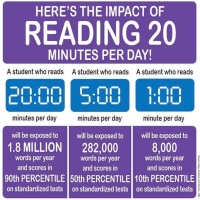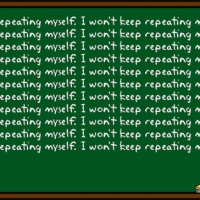project-based learning in the writing classroom.

When students speak, teachers listen. Most of the time. That’s how Creative Writing II came to be.
But it was a bumpy start.
The first year it ran, we lost the last third to quarantine. That second year, we navigated in and out of at least four different learning models. So, this past year was its first full year. (Notice I didn’t say “first normal year,” as Year 3 of Pandemic Teaching & Learning was anything but.) But it meant I could put more of my ideas to the test.
Like the Passion Project.
The Passion Project is Project-Based Learning (PBL) at its finest. During much of Term 4, these advanced writers were required to dream, plan, create, draft, revise, publish, and present an artifact about which they’re passionate. What follows is a quick rundown of how it worked, followed by some of the finished products. (To jump right to the students’ projects, click here.)
step 1: brainstorm.
In September, I shared a brief overview of the Term 4 Passion Project and asked each student to select their subject, medium (e.g., poetry collection, screenplay, novella), and audience. And that was it until Term 4.
step 2: select topics.
At the top of Term 4, students revisited their Term 1 ideas, refining them as needed.
step 3: plan.
The students developed a detailed plan that included their writing goals and their Whys (i.e., their reasons for doing the project). They also created their own project-specific rubric and, using a two-month calendar, planned out their specific work sessions (e.g., April 23rd = work on the artwork for Poem #3). While plans are critical for staying on task, whose To Do List isn’t overly ambitious at times? Accordingly, there was freedom in knowing that these plans were just that: plans. And plans can change.
step 4: self-assess progress.
During Week 1, I quickly realized that not all students thrive during in-class work sessions. Learners need accountability–even honors students working on a project that excites them. As a result, I created a rubric for weekly self-assessments that counted as a small quiz grade. This was the accountability component our open project needed–especially for students who claim to “work better under pressure” the night before something is due.
step 5: publish.
The students were required to publish their Passion Projects to an authentic audience, rather than an audience of one: Teacher-Lady. This looked different for everyone. Some shared their finished products on blogs, others published portions in our school’s literary magazine, some entered their products in writing contests, others submitted their pieces for publication on a larger scale, and others published their finished products to our Google Classroom.
step 6: reflect.
After the students finished their Passion Projects, they reflected on what worked, what didn’t, and what grade they deserve based on their own rubric they created.
step 7: share.
We spent the seniors’ last week sharing portions of our projects with each other.
the finished products.
The Passion Projects ran the gamut. There were poetry collections–some with companion artwork, screenplays, novellas, restaurant review blogs and blogs about music, reworked portions of novels already in the works, opening chapters of future pieces, and even a beautiful, bilingual piece about a grandfather’s immigration story.
Here are a few of the pieces I’ve been graciously allowed to share.
Below are three of Ally‘s poetry-meets-art pieces (influenced by Rupi Kaur). You can see Ally’s entire collection here.

Abbey and Bella published poetry collections as well, two of which they submitted for publication in our school’s literary magazine. Check out Abbey’s poem “Loose Change” and Bella’s piece entitled “Mine.”
Our other Abby reworked the Passion Blog she started two years ago in my sophomore English class, adding a restaurant review section.
Elizabeth published a portion of her screenplay, which required teaching herself the genre’s rules and formatting guidelines, as well as finding and learning new screenwriting software.
Ferris wrote the initial scenes of his fantasy novella, as well as planned out where he wants to head with the rest of it.
Taylor fine-tuned portions of the novel she wrote during COVID. What have YOU done lately?
Jackson composed a short story, which is absolutely something on which we’ll be able to all look back when he’s a published author.
Paige crafted a beautiful collection of poetry, as did another student who allowed me to share her poetry collection anonymously.
final thoughts.
This term-long Passion Project was a huge undertaking. It required extensive researching and planning, which was tough to fit in during the school year. In hindsight, much of that could’ve been done in the summer. But in my defense, I was too busy rocking in the fetal position in the summer to batch-plan for a brand new, term-long unit I’d teach 9 months later. However, because a lot of the work for me was up front, I could support the students while they worked–the epitome of Writers’ Workshop.
We teachers have a lot on our plates, and Project-Based Learning (PBL) is one of those things that sounds great on paper but is tough to fit in. What gets dropped if we add something massive like this? Educator-author John Spencer answers this beautifully: “PBL isn’t about adding something new to your plate. It’s about rearranging your plate with a focus on student voice and choice.” (#preach) He offers seven ways we teachers can find the time do this. (His podcast is a Teacher Goldmine as well.)
Based on the amazing end-products and the glowing student feedback, the Passion Project is definitely a keeper!
As are these amazing authors!








This is exactly what I am going to do with my Creative Writing II class. I teach at a middle school and have finally gotten permission to have a follow-up class for my Creative Writing and Journalism classes. I’ve never done PBL before. Any advice for a beginner?
LikeLiked by 1 person
Hi, there! First, thanks for stopping by! There are a slew of resources out there. I started with the HACK LEARNING series (which is great, by the way!)–specifically HACKING PROJECT-BASED LEARNING. It includes 10 bite-sized tips for newbies. I’ve found the first year of anything new to be daunting, but as long as the students are on board and patient, it’s a pretty amazing thing to sit back and watch! My students continue to love this term 4 project, as who as our year-long Passion Blog project. Let me know if you have any questions. Good luck!
LikeLike
Amazing points discussed! Really loved your idea about self assessments which is something great.
LikeLiked by 1 person
Thanks so much for the kind words and for taking the time to read about it!
LikeLike